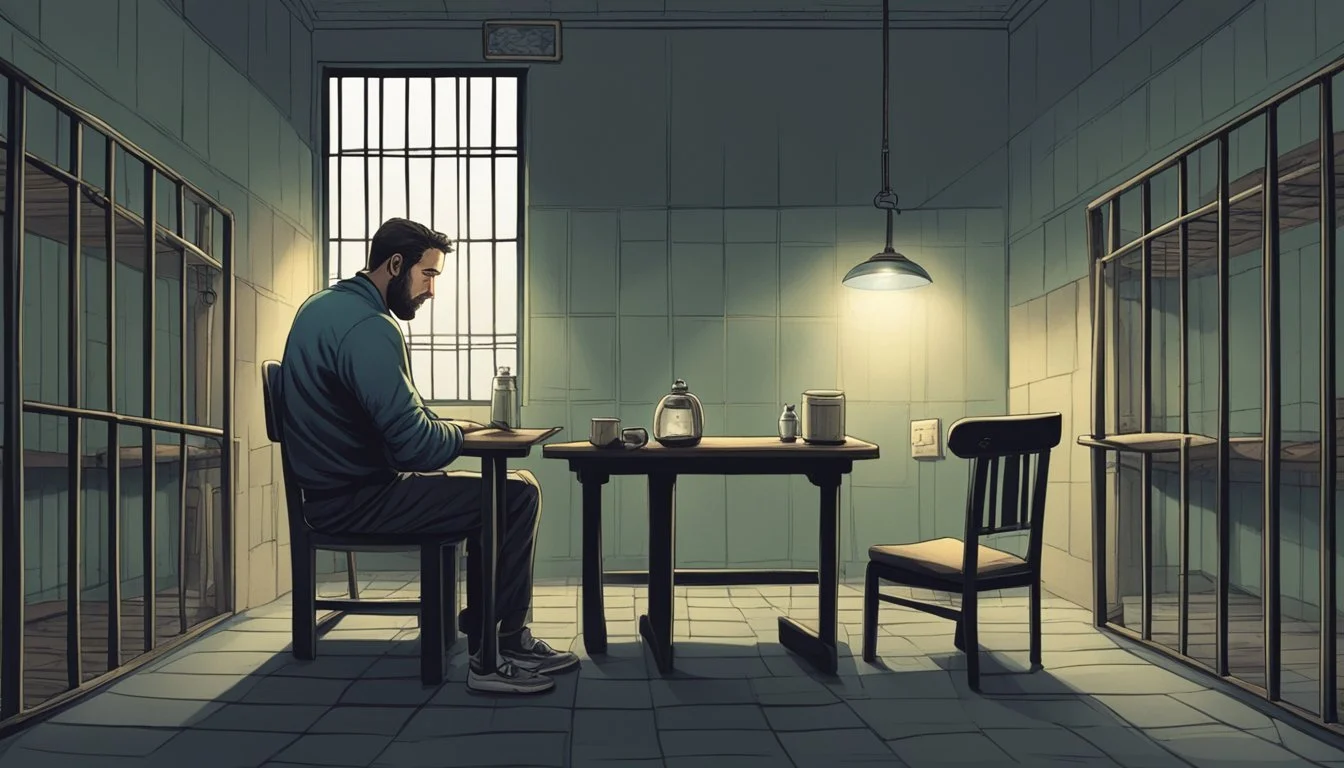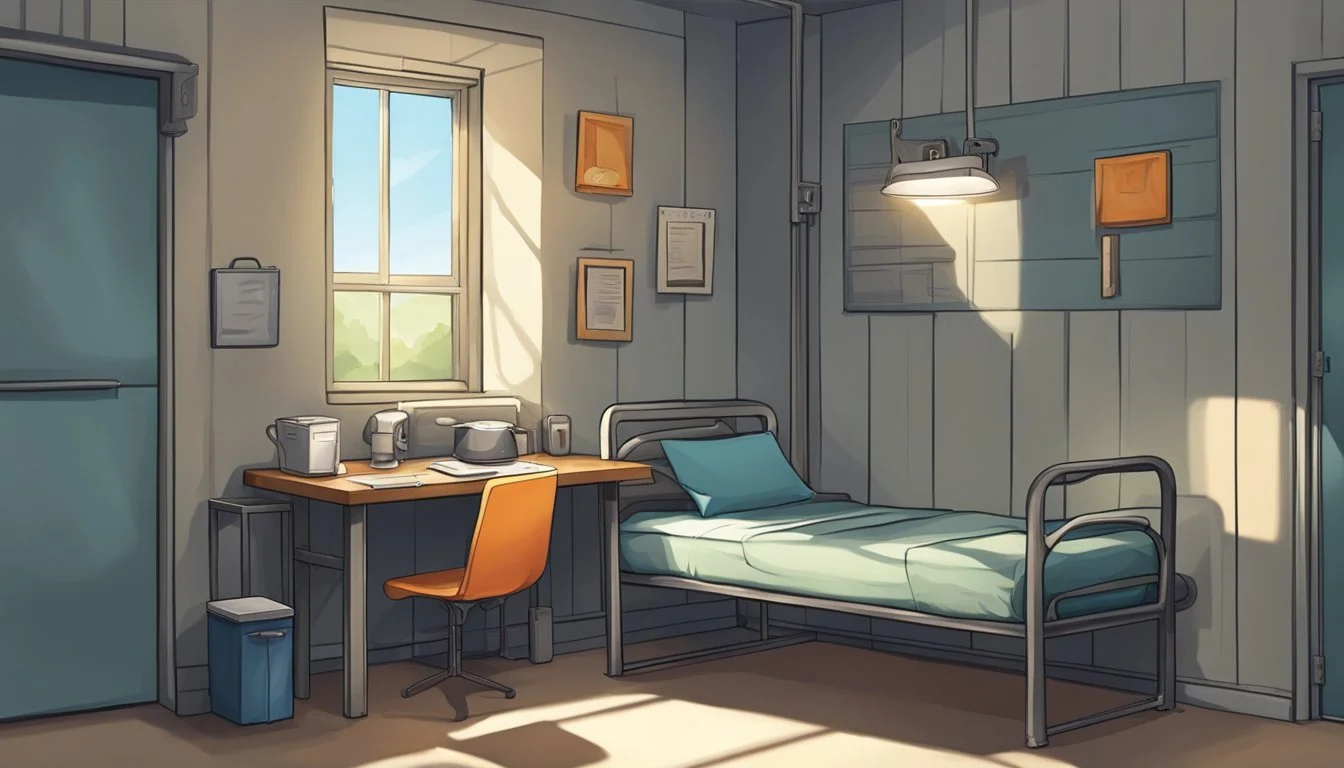Anthony Shore's Last Twist: Tourniquet Killer's Death Row Confessions Reveal Shocking Details
Anthony Allen Shore, known as the "Tourniquet Killer," terrorized Houston, Texas in the late 20th century. He murdered four female victims between 1986 and 2000, earning his nickname from his brutal method of strangulation using homemade tourniquets. Shore's reign of terror ended in 2004 when DNA evidence linked him to the crimes.
In his final days on death row, Shore made shocking confessions that shed new light on his heinous acts. These revelations provided closure for some cold cases and offered a glimpse into the mind of a serial killer. Shore's admissions ranged from details about his known victims to potential involvement in other unsolved crimes.
Shore was executed on January 18, 2018, at the Huntsville Unit in Texas. He declined a last meal and gave a final statement before receiving the lethal injection. His death marked the end of a dark chapter in Houston's history, but the impact of his crimes and confessions continues to resonate with law enforcement and the families of his victims.
Profile of Anthony Allen Shore
Anthony Allen Shore, known as the "Tourniquet Killer," was a serial killer who terrorized Houston, Texas from 1986 to 2000. His brutal crimes and unique method of murder left a chilling mark on the community.
Early Life and Criminal Background
Shore was born on June 25, 1962. He displayed violent tendencies from a young age. As an adult, Shore worked various jobs, including as a tow truck driver and telephone lineman.
Shore's criminal activities began long before his murders. He was a registered sex offender with a history of sexual abuse. This pattern of behavior escalated over time.
Shore's victims were primarily young women and girls. He targeted vulnerable individuals, often in areas he was familiar with due to his work.
Capture and Identification as the Tourniquet Killer
Shore's reign of terror ended in 2003 when DNA evidence linked him to multiple murders. His distinctive murder method involved using a ligature with a toothbrush or bamboo stick to strangle victims.
Investigators dubbed him the "Tourniquet Killer" due to this unique approach. Upon arrest, Shore confessed to four murders spanning from 1986 to 2000.
His victims included Laurie Tremblay, Maria del Carmen Estrada, Diana Rebollar, and Dana Sanchez. Shore's confession provided closure to several cold cases.
Shore's capture highlighted the importance of DNA technology in solving crimes. His case became a significant example of how forensic advancements can bring long-dormant cases to resolution.
The Tourniquet Killer's Crimes
Anthony Shore terrorized Houston from 1986 to 2000, murdering four females and earning the moniker "Tourniquet Killer" for his brutal methods. His victims ranged from young girls to adult women, all subjected to sexual assault and strangulation.
Modus Operandi
Shore's signature method involved using handmade tourniquets to strangle his victims. He fashioned these devices from ligatures and items like toothbrushes or bamboo sticks, which allowed him to tighten or loosen the pressure.
Shore typically targeted females, often in vulnerable situations. He would sexually assault his victims before killing them.
After committing the murders, Shore would dispose of the bodies in various locations around Houston. This included dumping one victim behind a Dairy Queen drive-thru.
Known Victims
Shore's confirmed victims were:
Laurie Tremblay, 14 (1986)
Maria del Carmen Estrada, 21 (1992)
Diana Rebollar, 9 (1994)
Dana Sanchez, 16 (1995)
All victims were found strangled with tourniquets around their necks. Evidence of sexual assault was present in each case.
Laurie Tremblay - The First Victim
Laurie Tremblay, a 14-year-old girl, became Shore's first known victim in 1986. She was found strangled near her home in Houston.
Shore's violent tendencies were evident in this initial murder. He used his signature tourniquet method to end Tremblay's life.
This crime remained unsolved for years until Shore's eventual confession. The murder of Laurie Tremblay marked the beginning of Shore's deadly spree that would continue for over a decade.
Investigation and Evidence
DNA analysis and forensic evidence played crucial roles in linking Anthony Shore to multiple murders. The Houston Police Department and Harris County District Attorney's Office collaborated on the complex investigation spanning years.
DNA Evidence and Breakthrough
DNA technology provided the key breakthrough in Shore's case. Investigators collected and preserved DNA samples from crime scenes of unsolved murders in the Houston area. In 2003, Shore was arrested for molesting his daughters. His DNA sample matched evidence from the 1992 murder of Maria del Carmen Estrada. This match led authorities to connect Shore to other unsolved cases.
Further DNA testing linked Shore to additional victims. Genetic evidence tied him to the murders of Laurie Tremblay in 1986 and Dana Sanchez in 1995. The DNA matches provided crucial evidence for prosecutors to build their case against Shore.
Houston Police and Harris County District Attorney's Office
The Houston Police Department's homicide division worked tirelessly to solve the cold cases. Detectives reexamined evidence and conducted new interviews. They created timelines and analyzed patterns in the murders.
The Harris County District Attorney's Office collaborated closely with police. Prosecutors built a strong case using the DNA evidence and other forensic findings. They presented a compelling narrative of Shore's crimes to the jury. The joint efforts of law enforcement and prosecutors ultimately led to Shore's conviction and death sentence in 2004.
Trial and Sentencing
Anthony Shore faced justice for his heinous crimes in a Texas courtroom. The legal proceedings culminated in a conviction and death sentence for the notorious Tourniquet Killer.
Court Proceedings
Shore's trial took place in Harris County, Texas in 2004. Prosecutors presented DNA evidence linking him to multiple murders. The jury heard gruesome details of how Shore strangled his victims using makeshift tourniquets.
Shore's defense team argued he suffered from brain damage and mental illness. They claimed this impaired his ability to control his actions. Expert witnesses testified about Shore's traumatic childhood and history of substance abuse.
The trial lasted two weeks. Shore did not testify in his own defense.
Conviction and Death Sentence
On October 21, 2004, the jury found Anthony Shore guilty of capital murder. The conviction was for the 1992 killing of Maria del Carmen Estrada.
The sentencing phase followed. Prosecutors sought the death penalty, citing Shore's other murders as evidence of future dangerousness. The defense urged jurors to consider Shore's mental health issues as mitigating factors.
After deliberation, the jury recommended a death sentence. The judge formally sentenced Shore to death by lethal injection. Shore showed no visible reaction as the sentence was read.
The Harris County District Attorney called the verdict just, given the brutality of Shore's crimes.
Death Row Confessions
Anthony Shore's time on death row yielded shocking admissions about his crimes. He provided details on known murders and revealed previously unknown victims.
Admission of Guilt
Shore confessed to the murders of Maria del Carmen Estrada, Diana Rebollar, and Dana Sanchez. He admitted to using a tourniquet to strangle his victims, earning him the moniker "Tourniquet Killer." Shore described his crimes in chilling detail, recounting how he selected and stalked his targets.
He expressed remorse for his actions, stating, "I wish I could undo the past but it is what it is." Shore's confessions provided closure for the families of his known victims.
Additional Confessions
While on death row, Shore revealed information about additional crimes. He admitted to molesting several children, including family members. These confessions shed light on the full extent of his criminal activities.
Shore also hinted at other possible murders, though investigators were unable to definitively link him to unsolved cases. His admissions prompted renewed interest in cold cases across Texas.
Shore's death row confessions ultimately served the cause of justice, providing answers to long-standing questions and ensuring he faced accountability for his crimes.
Execution and Aftermath
Anthony Shore's execution marked the end of his crimes and brought closure to the victims' families. The event sparked discussions about capital punishment and its impact on those affected by violent crimes.
Final Statements
Shore was executed by lethal injection on January 18, 2018, at the Huntsville Unit in Texas. As the first execution of 2018 in the United States, it drew significant attention.
In his final moments, Shore addressed the families of his victims. He said, "I wish I could undo the past, but it is what it is." Shore also expressed remorse for his actions and hoped his death would bring peace to those he had hurt.
The execution proceeded without complications. Shore was pronounced dead at 6:28 PM, 13 minutes after the lethal dose was administered.
Impact on Victims' Families
For the families of Shore's victims, the execution brought a mix of emotions. Some expressed relief that justice had been served after years of waiting.
Maria del Carmen Estrada's family members attended the execution. Her sister stated, "It doesn't bring her back, but it does bring closure."
Other families chose not to witness the execution. They preferred to remember their loved ones rather than focus on Shore's final moments.
The execution also reignited debates about the effectiveness of capital punishment in providing closure to victims' families. Some advocates argued that life sentences without parole could offer similar closure without the ethical concerns of state-sanctioned executions.
Reflections on the Case
Anthony Shore's case sparked intense debate about criminal justice and capital punishment. His confessions and eventual execution raised questions about the legal process and society's approach to violent offenders.
Review of Judicial Process
Shore's trial and conviction proceeded swiftly after his 2003 arrest. DNA evidence linked him conclusively to multiple murders. The prosecution presented a strong case, detailing Shore's violent crimes against women and girls in Houston.
Shore initially pled not guilty but later changed his plea to guilty. This eliminated the need for a lengthy trial. The jury unanimously recommended the death penalty based on the brutality of his crimes and likelihood of future violence.
Appeals processes lasted over a decade. Shore's attorneys argued ineffective counsel and challenged Texas' lethal injection protocol. Courts rejected these claims, finding no constitutional violations in Shore's conviction or sentence.
Discussion on Capital Punishment
Shore's execution reignited debate over the death penalty in Texas. Supporters argued it provided justice for victims and deterred violent crime. Critics questioned its effectiveness and morality.
Texas leads the U.S. in executions since 1976. Shore was the first person executed in 2018. His case highlighted the state's continued use of capital punishment for the most severe offenses.
Some raised concerns about executing mentally ill offenders. Shore claimed to have dissociative identity disorder. However, multiple evaluations found him competent to stand trial and be executed.
The case also sparked discussion on victims' rights. Families of Shore's victims expressed relief at the execution, viewing it as closure. Others questioned if execution truly provided healing for survivors.



